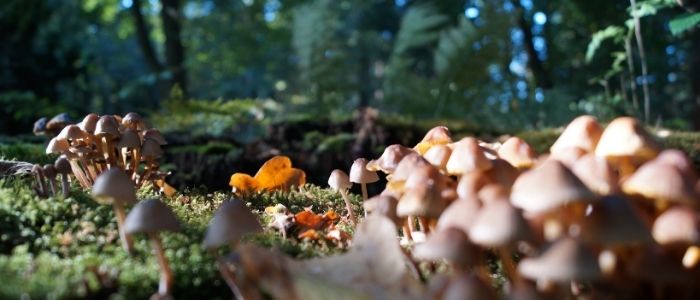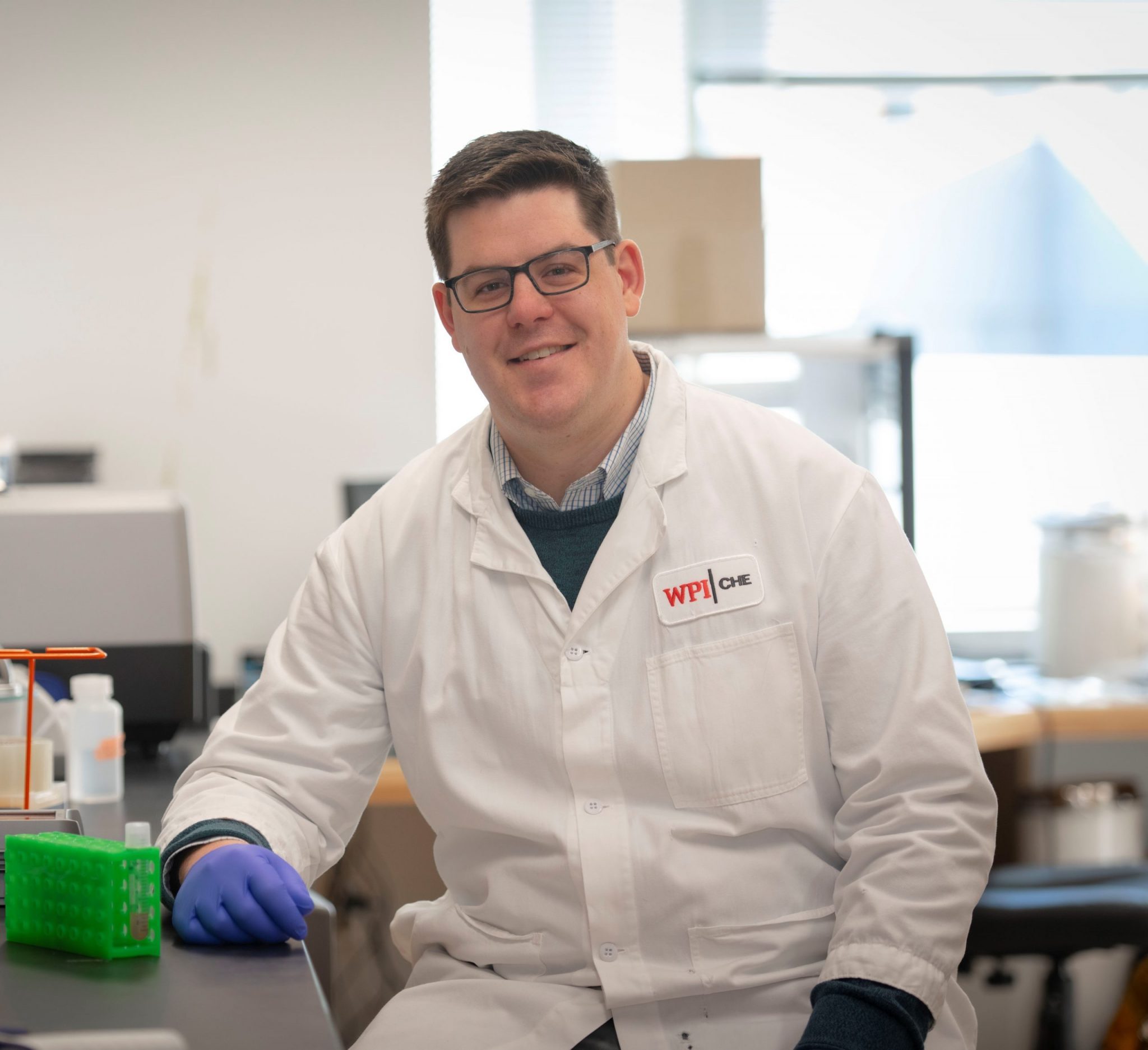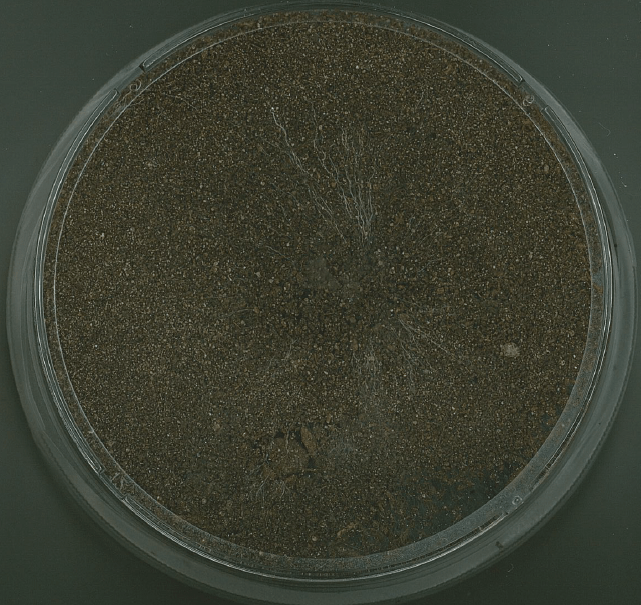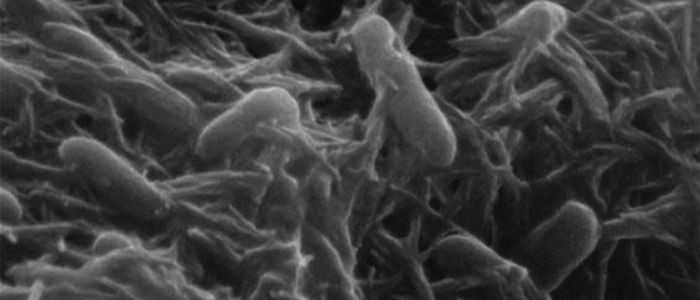Detecting explosives with fungal networks

The detection of explosives is a vital area of research that continually needs updating. A key reason for this is the need to clear areas of mines, which are often difficult to detect due to the invention of minimal metal mines and the depth at which they are buried. Detection and clearance techniques often involve humans being close to the mines and, therefore, carry significant risks. But what if we could get nature to do some of the dangerous work for us?
 That is exactly the question the US Defense Advanced Research Projects Agency (DARPA; VA, USA) has been asking, and it looks like they may have found the man to answer it. Eric Young is an Assistant Professor in the department of chemical engineering at Worcester Polytechnic Institute (WPI; MA, USA), a small technical school focused on research and project-based learning for undergraduates. When DARPA put out a call for synthetic biology solutions for detecting explosives, Eric was soon at hand with a potential candidate for detection: Fungi.
That is exactly the question the US Defense Advanced Research Projects Agency (DARPA; VA, USA) has been asking, and it looks like they may have found the man to answer it. Eric Young is an Assistant Professor in the department of chemical engineering at Worcester Polytechnic Institute (WPI; MA, USA), a small technical school focused on research and project-based learning for undergraduates. When DARPA put out a call for synthetic biology solutions for detecting explosives, Eric was soon at hand with a potential candidate for detection: Fungi.
You have recently been granted funding by the DARPA to explore the idea of using fungi to detect explosives. How did this come about?
It started with a funding call from DARPA for The BioReporters for Subterranean Surveillance program, within the program they specified a variety of parameters that they wanted in a system that would detect specific materials 1m below ground and report the presence of the material on the surface. One of these specifications was that the solution be based on synthetic biology as this kind of detection is currently challenging for electronics-based detectors.
My background is in engineering baker’s yeast, which is a type of fungi. One of the things that my lab has been interested in is taking the genetic engineering know how and technical understanding that we have developed in baker’s yeast and translating it into the manipulation of other organisms. Of particular interest are nonconventional yeast and fungi. These are organisms that have potentially beneficial properties for a variety of different applications. Many people interested in the fungi world and ecology may be familiar with the vast underground fungal networks that connect trees and other plants within ecosystems. It seems that these networks play a vital role in the ecology of the system, with one particular application being the transmission of chemical signals between organisms.
The rationale for choosing fungi as part of our approach to solve DARPA’s problem is that we already have this built-in natural fungal network that we might be able to harness to overcome the most difficult aspect of the project: the signal transmission. Synthetic biology has for the last couple of decades been interested in developing genetic circuits for detecting chemicals. We know that genetic circuitry approaches are good at detecting molecules very close to the cell, but the challenge is to transmit the signal over a long distance, in this case 1m. I think we need more than just engineered bacteria in our system, we think we need fungi to facilitate it.
Fungi can also offer another useful feature. As they form fungal hyphae – long branching filamentous structures – the soil bacteria with which they associate use the hyphae as highways through the soil, allowing them to avoid the dirt and detritus that’s in soil. This could be very helpful to us, using the hyphae to transport the detector bacteria down into the soil. In this way fungi can offer a dual purpose, accelerating how fast we can get bacteria down to 1m and how fast we can get the signal back up through the soil.

Atratum-soil-hyphae Credit: Eric Young
What is the premise for that system?
The premise is that we have engineered detector bacteria with a genetic circuit that can detect a chemical, in this instance explosives. A lot of abandoned minefields around the world are very dangerous and we wanted to address that unmet need. We chose TNT initially because we can detect non-explosive versions, such as DNT, in the lab, making it much safer to study. There is literature out there on detecting these chemicals so we can take advantage of that work to determine the genetic circuit we will use to detect TNT. Once the detector bacteria is established, we can use our unique fungal system to deliver that down into the soil where it can detect the explosives. On detection and completion of the genetic circuit, a signal will then be sent up the fungi where it will interact with a reporter bacterium. This reporter bacteria will then report the presence of the explosive directly below.
Have you decided on the type of fungi that you are going to use for this project? What are your key considerations for the fungi selected?
The current premise requires us to seed each field with the fungi, so we need to establish strains that grow fast and directly down into the soil or find ways of encouraging them to do so. At this point, genetic engineering of these types of fungi is very difficult. We conducted experiments on a panel of fungi that we thought would grow fast down into the soil which gave us a couple of candidates. We may find that naturally occurring fungi in soils can be commandeered for this purpose.
A lot of fungi grow on the surface close to the oxygen, so selecting fungi that can grow as deep as one meter is difficult. The speed at which they will need to grow for the process to be viable is also a major challenge.
Have you selected the bacteria that will detect the explosives?
We are working with an organism called Pseudomonas putida (P. putida) which is rapidly becoming a very popular bacteria to engineer for a variety of different purposes. Vital to us is the fact that it’s a natural soil microbe and it’s tolerant to a lot of chemicals we are interested in testing. Having selected this species, we will engineer it to contain a genetic circuit. When the engineered P. putida detects the explosive, it will complete the circuit and lead to the production of a signal that will be sent back up the fungi. It is a classic induction response system, which has been a fundamental principle in synthetic biology since the early 2000s, so we are really trying to make it simple.
What bacteria will you be using at the other end of the system to report the presence of the explosive?
We are currently working on this. At present the plan is to use fluorescent protein reporting – again keeping it simple – that will be picked up by a device that can detect fluorescence in the background of soil. Essentially when the signal reaches the top of the soil the reporter strain at the top will emit a fluorescence signal. We are investigating a few different organisms for this purpose because we want to ensure a potent signal is produced and that the organism selected can survive well in the soil. We are considering P. putida alongside many other bacteria and yeast as well.
 Molybdenum disulfide-producing bacteria could be the future of bioelectronics
Molybdenum disulfide-producing bacteria could be the future of bioelectronics
The metal-breathing bacterium Shewanella oneidensis produces molybdenum disulfide, which could be utilized for enhancing electronics, electrochemical energy storage and drug-delivery devices.
What techniques will you be utilizing to engineer the bacteria and the fungi?
We are using traditional molecular cloning and genetic transformation to engineer the bacteria. When it comes to the fungi, we are not engineering it, but we had to develop a lot of our own unique laboratory methods for this type of program. I think the only research teams attempting signal transmission of this sort over a 1m distance are all working on the BioReporters program – it’s a real challenge! We have had to invent our own soil columns and our own ways of testing signal transmission, because this hasn’t been done in synthetic biology before. I am excited to report on those results when we get them because they are new methods and if we can send the signal that far it will be a landmark in synthetic biology. There are a few other groups that are investigating doing this in different ways, so it will be interesting to see if the other groups can get it to work as well.
What are the challenges of sending a signal this far?
In synthetic biology, people just don’t work on this length scale. Typically, you mix an inducer with cells in a really liquid medium, which allows the chemical inducer to easily diffuse into the cell where it can bind to the transcription factor and turn on the circuit. In our system the challenge is diffusion. We need to diffuse 1m through the soil. Hopefully, the fungi will help with diffusion through the soil and still maintain a concentration that is sufficient to turn on the allowing us to detect very low concentration chemical signal from 1m depth.
Do you have any tips for best practice for genetic engineering techniques?
We are collaborating closely with Raytheon (MA, USA) who have a synthetic biology standards group. One of the leaders of that group is Jake Beal, who is also prominent in the field of synthetic biology, and we have been working really closely with him the best practices for measuring the performance of our genetic circuits and he has published software tools that allow us to put units on our fluorescence measurements that weren’t possible before, increasing our understanding and reproducibility of the data.
What area of synthetic biology do you think currently has the most potential; what excites you about the field?
I am excited about the promise of synthetic biology in engineering organisms across the tree of life. We are at a point where we can contemplate engineering almost anything that has DNA and that is really exciting, and also a little scary. We can pick the organisms that we think are most interesting and tweak them to accomplish tasks and solve problems. You can solve really important problems, for instance this problem for DARPA, and we can also answer bigger civilization scale questions like: what to do with all of our waste? What to do to replace petroleum? What can we do for energy? How do we colonize Mars?
The point I am driving at is that our knowledge of biology is really somewhat limited to humans, mammalian cells, yeast and E. coli bacteria. As we start to study some of the other organisms out there, we are learning that there is a really broad spectrum of biochemistry and genetics. As an engineer, I think about how we can take advantage of this broad spectrum to build something useful for society?
What people have traditionally done is take things that we have studied and try to place them into E. coli or yeast with genetic engineering, which a lot of the time doesn’t work very well. The exciting thing for me is to do the reverse. To actually say, “that unique system evolved in that group of organisms. Can we get genetic engineering tools to work in that organism, so we can engineer it to do its unique thing faster, better, or more precisely than you could do with E. coli or yeast?” That is what I get really excited about.